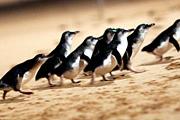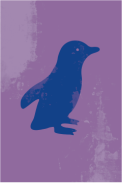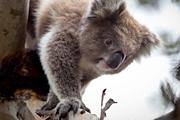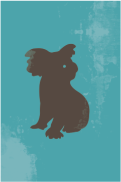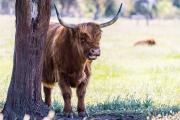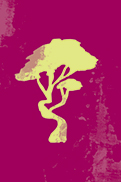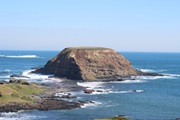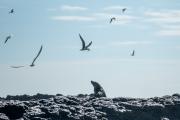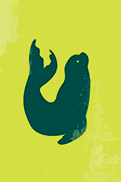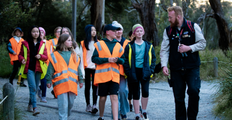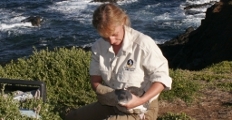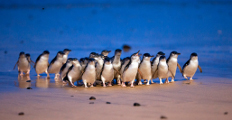Conservation News - Spring 2023
Welcome to the fourth edition of the quarterly conservation wrap up that takes you behind the scenes at the Nature Parks as our team shares key updates on projects, research and the amazing work being done to support conservation on Phillip Island (Millowl).
Marine Species
Threatened Species
Flora and Revegetation
Fauna
Pest Control
Climate Change
Marine Species
Penguin Parade counts
By Paula Wasiak, Senior Research Officer
With the breeding season starting a month earlier than usual for the little penguins, spring saw the hatching of eggs and fledging of chicks. The average number of penguins crossing the beach each evening at the Penguin Parade fluctuated from a low of 961 in September, to a high of 1499 in October. There was a lower average number of penguins returning to the colony each night in spring compared to the previous year, due to the lower breeding success so far in the season. Despite the early start to breeding, we have seen higher than average breeding failures, with tracking data showing breeding penguins are travelling further than usual (see below).
Despite the overall lower breeding success, up to a third of burrows showed they were on new eggs, meaning a second clutch from previous breeding attempts this season.
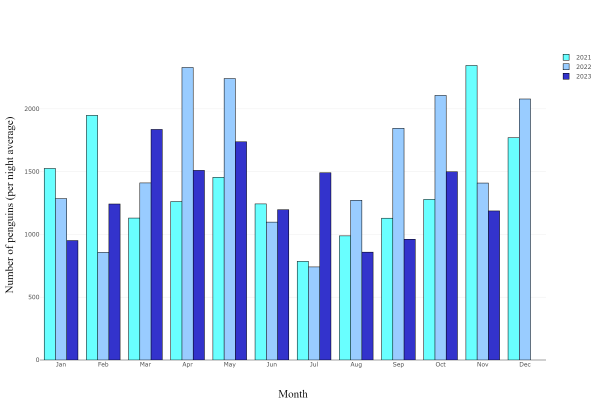
Figure 1: Spring Parade counts
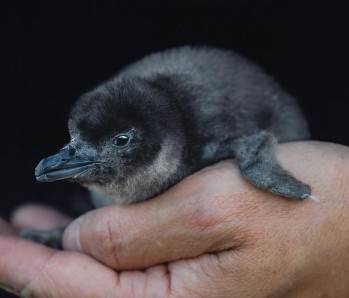
Image 1: Guard chick
Penguins at sea: a breeding season of challenges and resilience
By Andre Chiaradia, Senior Scientist
Concerning trends observed in the current little penguin breeding season include irregular parental care, extended parental absences of up to two to four days and older chicks left alone due to extended foraging trips. Our tracking studies for this season have concluded unveiling more extended foraging trips compared to the historical average. Penguins travelled longer distances for food, reducing their visits ashore and causing food shortages for chicks. Conditions improved slightly in November, with failed breeding penguins at the Parade returning for a second clutch, making up approximately 14% of nests with eggs and larger numbers of second clutches in other sites (see above). Despite the elevated chick mortality rates, the surviving chicks showed average weights. As an indicator of improving sea conditions for penguin foraging, the increased number of penguins moving across the Parade indicated a positive shift compared to the previous month (see graph).
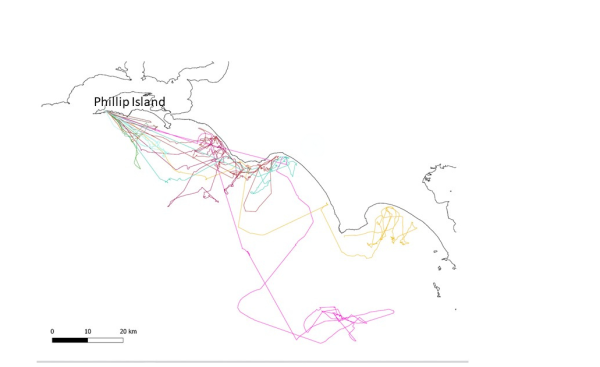
Figure 2: Penguin tracking 2023 season. The lines are tracks of penguins from the Penguin Parade travelling long distances from Phillip Island.
Little penguins and the impact of COVID-19 restrictions: shipping traffic, not visitors affected penguins
By Andre Chiaradia, Senior Scientist
The COVID-19 restrictions offered a unique chance to study how nightly visitation might influence the penguins’ behaviour at the Penguin Parade. The slowdown in human activity (known as anthropause), such as marine traffic, was also thought to help marine life by reducing pollution and disturbances. Even with a significant decrease in visitors to the Parade, sometimes none at all, the penguins' behaviour remained unchanged. Their diet, breeding success and where they searched for food stayed the same during restrictions. Surprisingly, maritime traffic didn't decrease either during restrictions. However, looking at multiple years, we discovered that more shipping traffic lowers how well the penguins hunt for food. Our findings indicate that environmental changes have a bigger impact on penguins than short-term human activity changes like restrictions. Our long-term data further reassures us that well-managed visitation doesn't affect our little penguins at the Penguin Parade. Read the full article: COVID-related anthropause highlights the impact of marine traffic but not of tourism on breeding little penguins - ScienceDirect
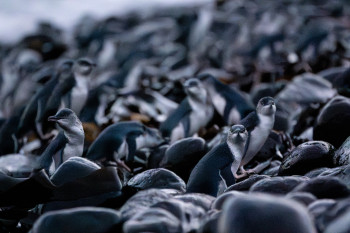
Image 2: Penguins during restrictions
Retrieval and upgrades propel sailing drone mission into 2024
By Andre Chiaradia, Senior Scientist
Our sailing drone has been diligently collecting valuable data on the marine environment and penguin prey, offering us fascinating insights into the delicate balance of our oceans. Fisheries Victoria officers consistently provided excellent support during the retrieval of the sailing drone under challenging conditions off Kilcunda. Their dedication and expertise guaranteed a successful operation, allowing us to proceed with essential tasks.
Safely retrieved for data downloading and a critical memory upgrade, our sailing drone capabilities have been enhanced for more impactful data collection. Its mission is set to continue until January 2024, thanks to the collaborative efforts of our international partners from France, Sweden and Spain. This international cooperation highlights our shared commitment to marine conservation. Stay informed about the latest developments in this project, with further details available on the Nature Parks website.
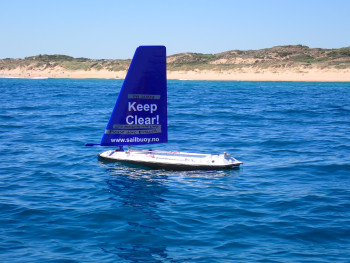
Image 3: Sailing drone at sea
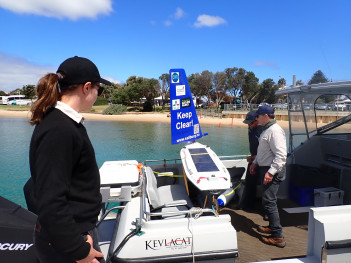
Image 4: Sailing drone retrieval
Australian fur seals: Predator-prey relationship between long-nosed fur seals and little penguins
By Rebecca McIntosh, Senior Scientist
We would like to congratulate Sarah-Lena Reinhold who has been awarded her Doctor of Philosophy Degree with the University of Adelaide for her research titled “Shifting Cultural-Ecological Baselines in the Recovery of Long-Nosed Fur Seals and the Implications for Little Penguin Prey”.
Sarah-Lena's dissertation investigates the predator-prey relationship between long-nosed fur seals (Arctocephalus forsteri) and little penguins (Eudyptula minor). By incorporating Aboriginal sealing histories, this research highlights that over 11,000 years of Aboriginal seal harvesting affected seal population range and abundance; populations that were then decimated by Western sealing in the early 1800s. Subsequently, both species were released from hunting pressures, leading to a phase of population increase and recovery. Such historic perspectives are critical to understanding current populations and forecast potential populations of long-nosed fur seals as they recover across their original range of south-eastern Australia. This study addressed knowledge gaps in the occurrence and quantification of long-nosed fur seal predation on little penguins, identified six predation hotspots across south-eastern Australia and improved our ability to accurately measure penguin predation from fur seal scats. Indeed, previous methods had been overestimating penguin predation by long-nosed fur seals. A cost-effective chemical tool was developed to identify the source colony of predated little penguins, revealing site-specific predator-prey dynamics to assist conservation management. This new research helps us understand the natural relationship between these two native and iconic species and directs conservation efforts towards human-caused marine threats, habitat improvement and the management of terrestrial introduced predators.
Threatened Species
Eastern barred bandicoots
By Meagan Tucker, Research Officer
This spring saw Eastern barred bandicoot trapping undertaken at Churchill Island and Fishers Wetland in September and the Summerland Peninsula in October. Across three nights at Churchill Island, we had 85 captures of 58 individuals, 29 of which were seen for the first time. One male was caught every night and even twice in one night! Trapping at Fishers Wetland occurred for the first time since Autumn 2022, with 14 captures of 11 individuals, 10 of which were seen for the first time.

Image 5: EBB Trapping Team – Churchill Island spring 2023
For trapping on the Summerland Peninsula, we were fortunate to have the assistance of staff from the Bunurong Land Council Aboriginal Corporation. Across three nights we had 24 captures of 20 individuals, 12 of which were seen for the first time. This year at Summerland Peninsula, bandicoots appeared less inclined to enter traps, however there still appeared to be plenty of healthy animals in the area.
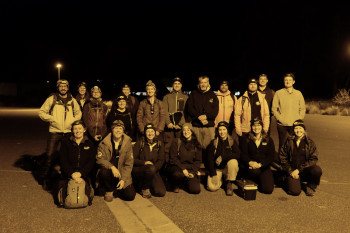
Image 6: EBB Trapping Team – Summerland Peninsula spring 2023
Across these two trapping sessions volunteers contributed an impressive 484 hours over six days of trap setting, research assisting and handling. Eastern barred bandicoots were found to be in good health and breeding across all sites, with females carrying pouch young of various ages.
Hooded plovers
The hooded plover breeding season began 17 September at Surf Beach with a two-egg nest. One of the parents had a white engraved leg flag (CU) and was a male that was banded at Cape Patterson in 2017.
Unfortunately, the nest felt the effects of the last of winter and rough weather, causing the pair to abandon the eggs. The first success was seen on 23 November, when three chicks hatched on busy Cleeland Bight beach. Unfortunately, six nests have failed due to strong winds, high tide washout and suspected raven predation.
Staff and volunteers were busy monitoring the hooded plover throughout winter as they moved around in small flocks, then paired up to re-establish their breeding territories. Until mid-December, 17 volunteers participated, contributing hundreds of hours on beach time and 513 entries into the ‘Beach Nesting Bird’ portal. There are 57 Phillip Island sites monitored each season and nine pairs have had nests. The three pairs at Broadwater Ave, Colonnades west and Anchorage also had chicks.
Deakin student, Lily Pagels, started a three-month Beach Nesting Birds Internship to assist with the camera monitoring project to determine causes of nest loss. Up until December, Lily set two remote nest cameras, one which failed to capture predation as all the eggs hatched, and the second at Crazy Birds which was still on an active nest and so was not yet retrieved at the time of writing.
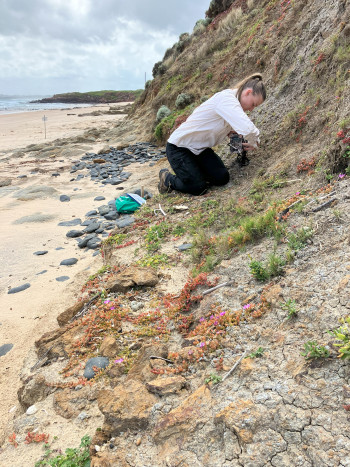
Image 7: Intern Lily Pagels setting a remote camera at Colonnades west nest 28/11/23
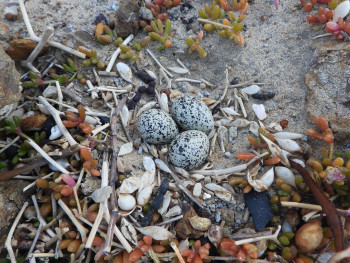
Image 8: hooded plover nest and eggs
The new ‘Sharing Our Shores’ signage was placed at all the main beach access point on 1 December and the program will run until 30 April 2024. The colourful signage showcases artwork by local school students who participated in last year’s poster competition. It encourages beachgoers to share the beach with nesting wildlife.
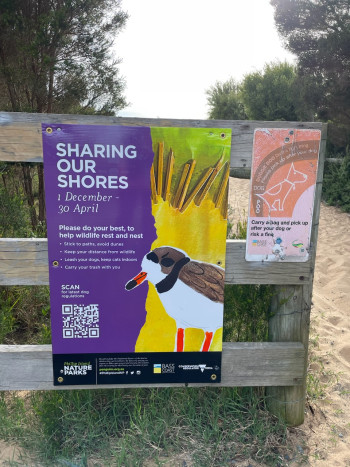
Image 9: Sharing Our Shores signage
Threatened Flora
By Susan Spicer, Ranger
Ecologist Gidja Walker conducted vegetation monitoring at Surf Beach after being contracted by Phillip Island Landcare and Surf Beach Sunderland Bay Coast Action Group. The assignment involved conducting the baseline flora survey and one-year monitoring following the construction of the rabbit ex-closure in 2022.
Monitoring is scheduled to occur again in three and eight years, with anticipated observations of changes in vegetation due to reduced rabbit impact. Within just one year, Gidja noted natural regeneration, particularly of species like pale-fruit ballart (Exocarpus stricta) and the prostrate form of hop goodenia (Goodenia ovata).
The Surf Beach Sunderland Bay Coast Action group also took part in monitoring four of the biodiversity cages during an October working bee. The cages have been in place for several years, and it is reassuring to observe that there is no exposed earth remaining within them. There are large numbers of trigger plants (Stylidiulm gramnifolium), copper wire daisies (Podolepis sp.), along with at least 18 other species of indigenous plants present, including sun orchids (Thelymitra sp).
The Nature Parks rangers have been monitoring the herbivore exclusion coop within Rhyll wetland which was initially established to promote successful natural recruitment of currant wood (Monotoca glauca). It has now become a haven for many other indigenous plant species, some of which are found nowhere else on Millowl. A total of 629 new currant wood plants were counted along with hundreds of golden peas (Aotus ericoides), grey parrot-pea (Dillwynia cinerascens) and common heath (Epacris impressa). A new record for the island of prickly guinea-flower (Hibbertia acicularis) was observed by vegetation monitoring volunteer Sue Darby.
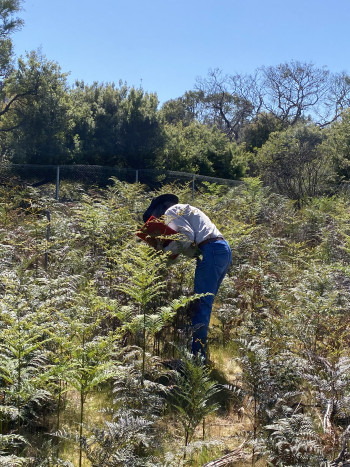
Image 10: Volunteer Sue Darby vegetation monitoring
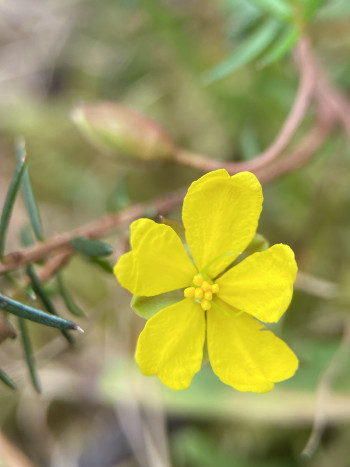
Image 11: Prickly Guinea flower (Hibbertia acicularis)
Flora and Revegetation
Future proofing little penguin habitat – it takes a team.
By Simon Heislers, Project Coordinator
Good late season rainfall maintained high soil moisture levels on the Summerland Peninsula throughout spring, providing ideal growing conditions and an opportunity for revegetation plantings of the green firebreaks to continue late into the season.
The focus for this season’s plantings has been on the series of three parallel firebreaks established in the middle of the peninsula during May–June. The main firebreak on Mandeville Road, a public access road, is 50m wide and the other two on 20–25m wide management tracks immediately to the east, closed to the public.
Approximately 3.2ha of dense, woody vegetation — swamp paperbark (Melaleuca ericifolia) — was cleared during mulching and slashing operations from the firebreaks. It was replaced by 15,000 indigenous, fire-retardant, herbaceous plants over the planting season including bower spinach (Tetragonia implexicoma). Plantings were successfully carried out by the Nature Parks staff, contract planters, as well as Nature Parks and corporate volunteers during dedicated project volunteer planting days supported by the Penguin Foundation.
The largest volunteer planting day was held in October and involved over 100 staff and volunteers including 70 corporate volunteers from Penguin Random House and Royal Canin, as well as a dozen Nature Parks volunteers. This followed from previous planting days in August with 24 NAB corporate volunteers and in September with 17 Year 11 students and teachers from Scotch College.
In total 120 volunteers assisted with plantings on the green firebreaks this season – nearly matching the number of plants planted!
Meanwhile, an additional 850 plants were planted around exposed penguin nestboxes at key locations around the peninsula to provide future cover and cool the nestboxes and their inhabitants. The broader effort to enhance habitat across the peninsula, specifically in cooling it and mitigating the impact of heatwave events on wildlife, will be a central focus over the next two years of the project. The green firebreaks will remain a priority for ongoing revegetation and management during this period and beyond.
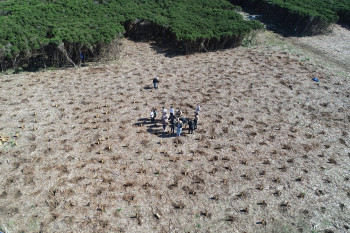
Image 12: Volunteers NAB firebreak
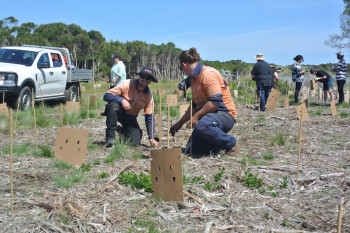
Image 13: Solent firebreak planting BLCAC
Barb Martin Bushbank
By James Anderson, Nursery Supervisor
The Barb Martin Bushbank enjoyed early spring conditions this year with beautiful floral displays of trigger plants, copper wire daisies as well as our native lilies and orchids.
With revegetation and commercial production out of the way, our focus at the nursery turned to threatened flora production and enhancing our retail space with larger stock and some new species including chocolate lilies (Athropodium strictum), notched bush-pea (Pultenea retusa) and yam daisies (Microseris walterii).
A successful propagation season saw great numbers of our threatened species including Olearia species 2, salt lawrencia (Lawrencia spicata), currant wood (Monotoca glauca) as well a small number of crimson berry (Leptocophylla oxycedrus), to assist in our recovery plan.
The nursery has been bustling with activity as a full house of volunteers has been doing an outstanding job managing our spring germinations and beginning our seed collection and sorting process.
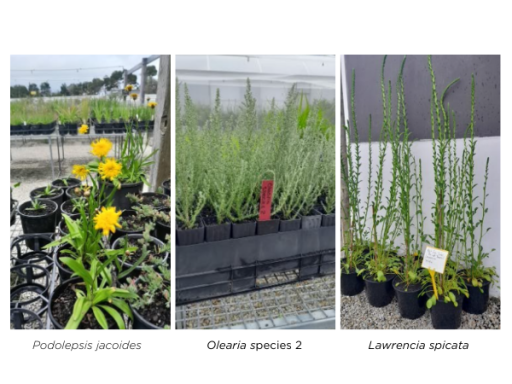
Image 14-16: Podolepsis jacoides, Olearia species 2, Lawrencia spicata
Fauna
Koalas
By Lachlan Sipthorp, Senior Ranger
The Bluegum trail koalas and their joeys were captured for annual health checks in September. This presented an opportunity to microchip our new joeys at Newhaven Veterinary Clinic and confirmed their genders to be one male and two females. These welcome additions to the Koala Conservation Reserve were then relocated to the Koala Boardwalk to allow up close viewing experiences in the treetops.
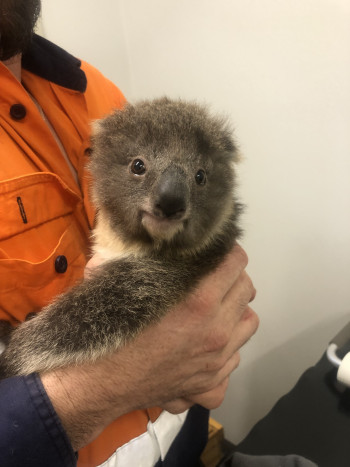
Image 17: Koala vet checks
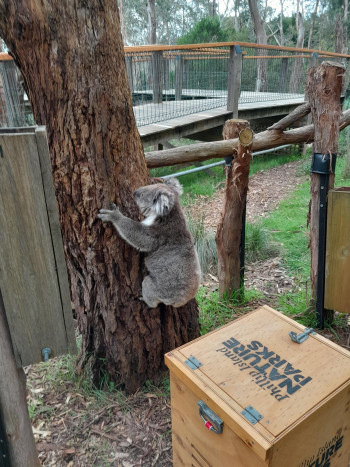
Image 18: Release after vet check
Wildlife Rehabilitation Centre
By Kim Noy, Senior Wildlife Welfare Officer
From September to October the Wildlife Rehabilitation Centre responded to 260 wildlife calls across 35 different species. We released the final batch of our juvenile pelicans that arrived during winter, as they have since been regularly sighted across Phillip Island. After a long hiatus with no penguins coming into care, there was an increase in malnourished penguins admitted to the centre, many of these were late chicks and juveniles due to the low breeding success of early spring.
Pest Control
4G motion sensors and the power of AI
By Ashley Reed, Ranger
The team has deployed 47 4G motion sensor cameras to assist with the ‘Fairy Tern Project’ and the ongoing cat control program. These cameras are connected to the 4G network and use artificial intelligence to identify target species. If the camera photographs what it believes to be a cat, a notification is sent, and immediate action can be taken to deal with the issue. This is a vast improvement on the old technology whereby an SD card needed to be collected periodically and potentially thousands or tens of thousands of images would need to be manually searched to identify target species.
Since deployment, cameras have identified two cats whose behaviour enabled us to strategically place traps. One was caught in a matter of days while the second is a work in progress.
Operators also have the ability to log into the system to correct misidentified images, thereby providing additional information that improves the accuracy of the AI program.
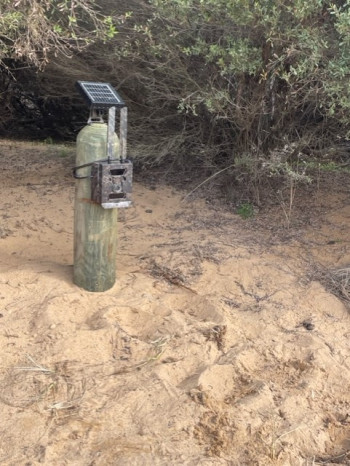
Image 19: 4G camera installed onto bollard
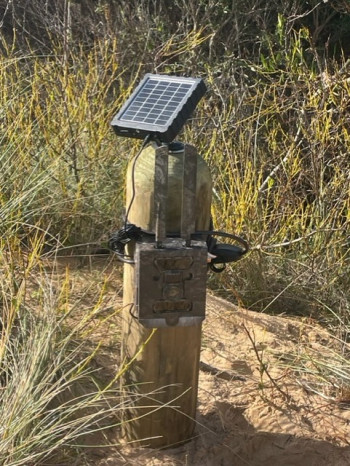
Image 20: 4G camera Bollard setup
Climate Change
By Rebecca McIntosh, Senior Scientist
This spring Telematics Trust approved our project titled “Lost at Sea: Conserving cultural heritage and fur seals” to measure the impacts of climate change on Seal Rocks. This three-year project is a partnership between Phillip Island Nature Parks, Monash University, Bunurong Land Council Aboriginal Corporation (BLCAC) and Wildlife Coast Cruises.
We will be measuring how ocean inundation is changing the site through erosion at Seal Rocks and how heatwaves are affecting pup survival during the summer breeding season when they are small and vulnerable. BLCAC will perform an archaeological survey of cultural heritage and test methods of monitoring climate change impacts to cultural heritage through erosion of Country. We will be using drones, temperature loggers and wave and tide loggers to gather the necessary information over the breeding seasons. Wildlife Coast Cruises will assist with educating visitors to Seal Rocks through their ecotourism business. With the El Niño and predicted heatwave this summer, we are well placed to learn more about climate change impacts on Seal Rocks, the largest Australian fur seal breeding site and important cultural site.
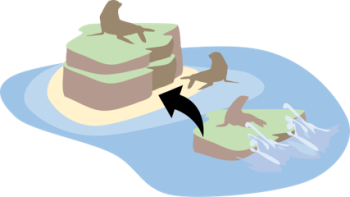
Figure 3: Infographic by Peter Puskic demonstrating the impact of ocean inundation on fur seals that rely on low-lying breeding sites
Current erosion in prime Australian fur seal breeding areas at Seal Rocks
Photographs taken at Seal Rocks showing loss of sediments due to erosion.
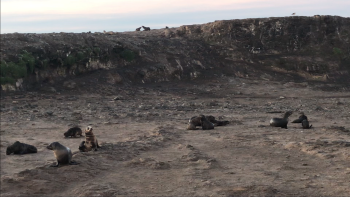
Image 21: The rocky ridges that the pups are playing on have only recently been uncovered
Light pollution
Global celebrations, global consequences: the ripple effect of light pollution
By Andre Chiaradia, Senior Scientist
During the festive season, it is a good time to reflect on the profound influence of faith and cultural contexts on the increased use of artificial lights, and how we can mitigate the adverse effects of the global trend of escalating light pollution. The Nature Parks scientists participated in a global study on how large-scale human celebrations increase global light pollution as part of an international collaboration involving Spanish and New Zealand scientists.
The natural night sky has vital importance to global ecosystems. The regular cycle of day and night, assisted by natural light, governs fundamental biological processes such as circadian rhythms, reproductive behaviours, and predator-prey interactions.
It is also important for human societies, for example, in Aboriginal culture, one of the world's oldest living cultures, the night sky holds profound significance, representing a celestial canvas intertwined with spirituality, identity and rich oral traditions embedded in Creation stories. For Aboriginal and Torres Strait Islander people, preserving the natural night sky is essential to maintaining cultural integrity and their spiritual heritage.
The visible transformation through the rise in artificial lights, most pronounced during the night, has seen a significant increase in artificial light intensity and the illuminated surface of our planet over the past decades. For many more recent societies, maintaining the natural night light seems less imperative. One visible impact is the surge in light pollution during religious and cultural celebrations. This study found a strong correlation between peaks in night-time light pollution and macro-cultural festivities involving large gatherings and vibrant displays of artificial lights. It identifies Christmas, Ramadan, Diwali, Chinese and Vietnamese (Tê’t) New Year celebrations as key contributors to increased night-time light intensity globally. The worldwide night-time light pollution peaks aligned with significant faith-based celebrations, emphasising the profound connection between light usage and cultural and religious observances. The study offers valuable insights for policymakers, stressing the importance of the sustainable use of artificial lights to preserve the sanctity of Earth's ecosystems.
Ramírez, F., Y. Cordón, D. García, A. Rodríguez, M. Coll, L. S. Davis, A. Chiaradia and J. L. Carrasco (2023). "Large-scale human celebrations increase global light pollution." People and Nature DOI: 10.1002/pan3.10520. Fully available as an open source online.
This article also appears in the summer newsletter of the Australian Dark Sky Alliance Summer StarSavers Newsletter | ADSA
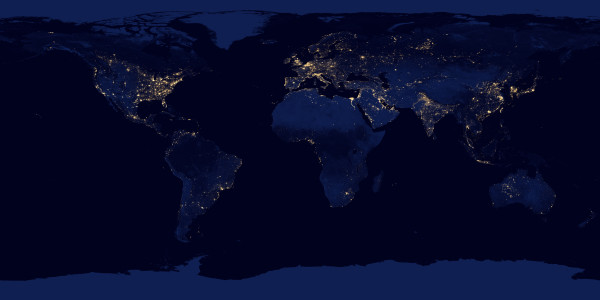
Figure 4: Seasonal patterns in nightlight for the countries grouped according to their major cultural celebrations. It considers countries with more than 70% of the population adhering to a specific religion, as well as China and Vietnam associated to New Year celebrations.





